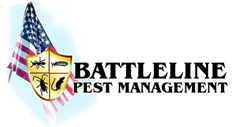What are flying insects?
Flying insects are insects that have the ability to fly or glide through the air using their wings. There are many different types of flying insects, and they can be found in nearly every ecosystem on earth. Not all flying insects are problematic but here are some that we can help with:
- Bees: Flying insects that play an important role in pollinating plants and producing honey.
- Wasps: Flying insects that are closely related to bees and can be social or solitary.
- Mosquitoes: Small, flying insects that are known for biting humans and animals to feed on blood.
- Flies: Flying insects with two wings that are attracted to decaying organic matter and may carry diseases.
What is a Yellow Jacket?
Yellow jackets are stinging insects that are commonly found in North America and belong to the wasp family. They are known for their aggressive behavior, especially when their nests are disturbed. Yellow jackets typically build nests in the ground, in walls, or in trees.
Yellow Jackets are more aggressive than bumble bees therefore their sting can be more painful since they will bite and sting at the same time. For someone who is allergic, yellow jackets can even be lethal.
First, look around you. If you noticed an increased amount of wasps then you may have a nest near your property. Yellow jackets can form nests both above and below ground. A sign of an underground nest can be small stones and dirt piling up near the opening of a burrow.
To get rid of yellow jackets, a pest control service can use a combination of physical removal and chemical control methods. Physical removal involves safely removing the nest, which can be done by a professional wearing protective gear. Chemical control methods involve the use of insecticides, which can be applied to the nest or surrounding areas.
Yellow Jackets are attracted to food, especially foods that are sweet. Because of this, keep food covered outside and make sure that you’re cleaning well after meals.
Additional things you can do:
- Keep trash cans closed and clean
- Limit sources of sugar in the backyard (i.e. hummingbird feeders)
- Seal up any cracks or awnings. These could create nest areas.
If you see a large paper nest and wasps that are white and black, it may be bald-faced hornets. If you need help addressing an issue, give us a call at Battleline Pest.
What is a Bald-faced Hornet?
Bald-faced Hornets are another type of wasp and are relatives to Yellow Jackets. They do look different. These wasps are black with a white face on their abdomen and are approximately 1 inch long.
These hornets are very protective over their nests and will attack aggressively if they feel threatened. These hornets will also sting repeatedly without harming itself. Because of how aggressive they can become, it’s important to get rid of their nests.
Due to the aggressiveness of Bald-faced Hornets, their nests should be removed by a professional.
It can also be hard to prevent these, but being mindful of food waste and making sure trash cans are sealed properly does help!
What are Carpenter Bees?
Carpenter bees are large, solitary bees that are known for boring into wood to lay their eggs. They are similar in appearance to bumblebees, but have a shiny, black abdomen. They are most commonly found in decks, wooden siding, and outdoor furniture.
Only female Carpenter Bees have stingers, but they don’t generally sting people unless you threaten them. While carpenter bees are not typically dangerous to humans, their tunneling behavior can cause significant damage to wooden structures over time.
To treat carpenter bees, a pest control service can use a combination of physical exclusion (sealing holes), chemical treatments, and mechanical control methods. Chemical treatments may include the use of insecticides, while mechanical control methods could involve removing nests and plugging holes. A pest control professional can offer the best advice on how to effectively treat carpenter bee infestations.

